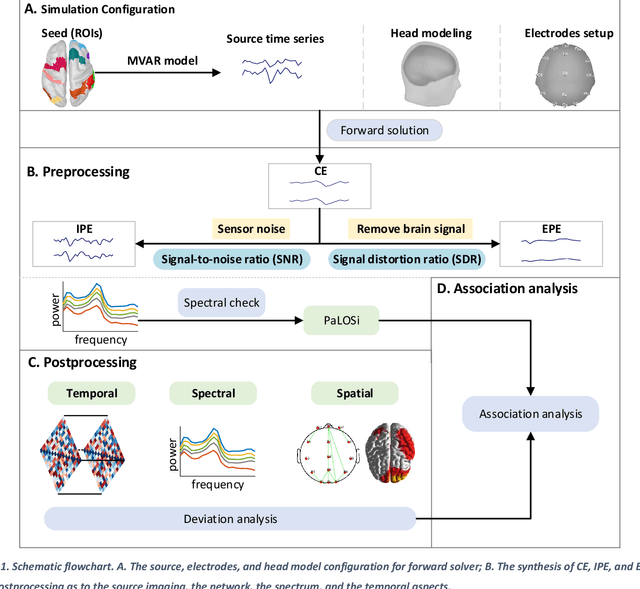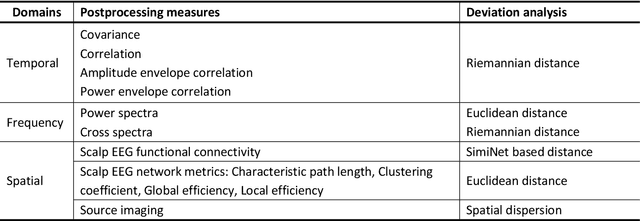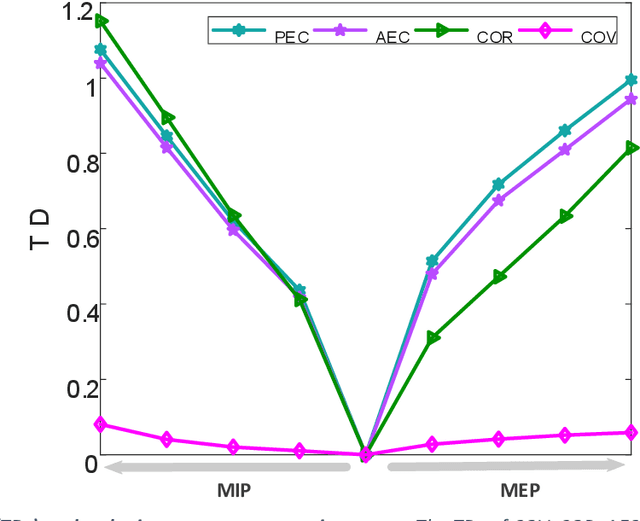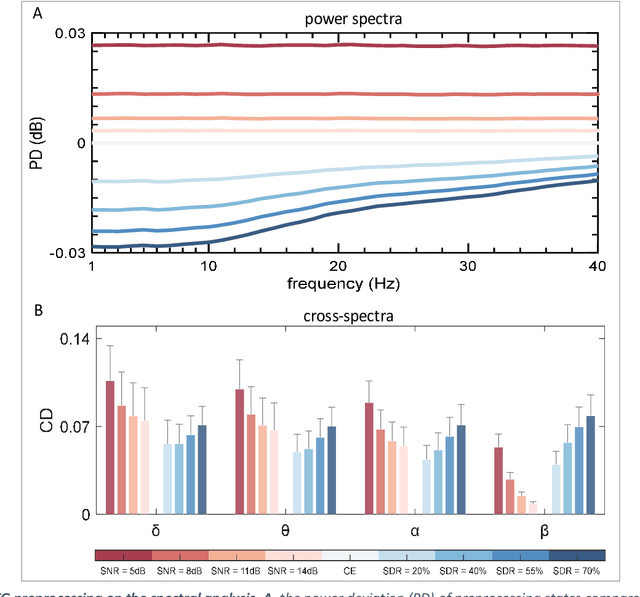Pedro Antonio Valdes-Sosa
How do the resting EEG preprocessing states affect the outcomes of postprocessing?
Oct 22, 2023



Abstract:Plenty of artifact removal tools and pipelines have been developed to correct the EEG recordings and discover the values below the waveforms. Without visual inspection from the experts, it is susceptible to derive improper preprocessing states, like the insufficient preprocessed EEG (IPE), and the excessive preprocessed EEG (EPE). However, little is known about the impacts of IPE or EPE on the postprocessing in the frequency, spatial and temporal domains, particularly as to the spectra and the functional connectivity (FC) analysis. Here, the clean EEG (CE) was synthesized as the ground truth based on the New-York head model and the multivariate autoregressive model. Later, the IPE and the EPE were simulated by injecting the Gaussian noise and losing the brain activities, respectively. Then, the impacts on postprocessing were quantified by the deviation caused by the IPE or EPE from the CE as to the 4 temporal statistics, the multichannel power, the cross spectra, the dispersion of source imaging, and the properties of scalp EEG network. Lastly, the association analysis was performed between the PaLOSi metric and the varying trends of postprocessing with the evolution of preprocessing states. This study shed light on how the postprocessing outcomes are affected by the preprocessing states and PaLOSi may be a potential effective quality metric.
Parallel Log Spectra index : a quality metric in large scale resting EEG preprocessing
Oct 18, 2023



Abstract:Toward large scale electrophysiology data analysis, many preprocessing pipelines are developed to reject artifacts as the prerequisite step before the downstream analysis. A mainstay of these pipelines is based on the data driven approach -- Independent Component Analysis (ICA). Nevertheless, there is little effort put to the preprocessing quality control. In this paper, attentions to this issue were carefully paid by our observation that after running ICA based preprocessing pipeline: some subjects showed approximately Parallel multichannel Log power Spectra (PaLOS), namely, multichannel power spectra are proportional to each other. Firstly, the presence of PaLOS and its implications to connectivity analysis were described by real instance and simulation; secondly, we built its mathematical model and proposed the PaLOS index (PaLOSi) based on the common principal component analysis to detect its presence; thirdly, the performance of PaLOSi was tested on 30094 cases of EEG from 5 databases. The results showed that 1) the PaLOS implies a sole source which is physiologically implausible. 2) PaLOSi can detect the excessive elimination of brain components and is robust in terms of channel number, electrode layout, reference, and the other factors. 3) PaLOSi can output the channel and frequency wise index to help for in-depth check. This paper presented the PaLOS issue in the quality control step after running the preprocessing pipeline and the proposed PaLOSi may serve as a novel data quality metric in the large-scale automatic preprocessing.
 Add to Chrome
Add to Chrome Add to Firefox
Add to Firefox Add to Edge
Add to Edge